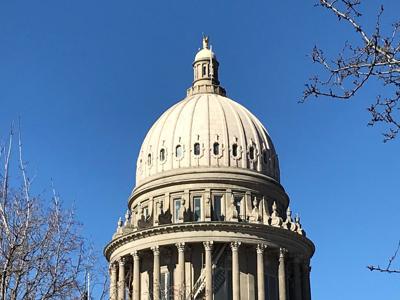My research focus lately has been studying and encouraging markets in airspace. Aviation airspace is valuable but has been assigned to date by regulatory mechanisms, custom, and rationing by industry agreement. This rationing was tolerable decades ago when airspace use was relatively light. Today, regulators need to consider markets in airspace–allowing the demarcation, purchase, and transfer of aerial corridors–in order to give later innovators airspace access, to avoid anticompetitive “route squatting,” and to serve as a revenue stream for governments, much like spectrum auctions and offshore oil leases.
Last month, the FAA came out in favor of “urban air mobility corridors”–point-to-point aerial highways that new eVTOL, helicopter, and passenger drones will use. It’s a great proposal, but the FAA’s plan for allocating and sharing those corridors is largely to let the industry negotiate it among themselves (the “Community Business Rules”):
Operations within UAM Corridors will also be supported by CBRs collaboratively developed by the stakeholder community based on industry standards or FAA guidelines and approved by the FAA.
This won’t end well, much like Congress and the Postmaster General letting the nascent airlines in the 1930s divvy up air routes didn’t end well–we’re still living with the effects of those anticompetitive decisions. Decades later the FAA is still refereeing industry fights over routes and airport access.
Rather, regulators should create airspace markets because otherwise, as McKinsey analysts noted last year about urban air mobility:
first movers will have an advantage by securing the most attractive sites along high-traffic routes.
Airspace today is a common-pool resource rationed via regulation and custom. But with drones, eVTOL, and urban air mobility, congestion will increase and centralized air traffic control will need to give way to a more federated and privately-managed airspace system. As happened with spectrum: a demand shock to an Ostrom-ian common pool resource should lead to enclosure and “propertization.”
Markets in airspace probably should have been created decades ago once airline routes became fixed and airports became congested. Instead, the centralized, regulatory rationing led to large economic distortions:
For example, in 1968, nearly one-third of peak-time New York City air traffic–the busiest region in the US–was general aviation (that is, small, personal) aircraft. To combat severe congestion, local authorities raised minimum landing fees by a mere $20 (1968 dollars) on sub 25-seat aircraft. General aviation traffic at peak times immediately fell over 30%—suggesting that a massive amount of pre-July 1968 air traffic in the region was low-value. The share of aircraft delayed by 30 or more minutes fell from 17% to about 8%.
This pricing of airspace and airport access was half-hearted and resisted by incumbents. Regulators fell back on rationing via the creation of “slots” at busy airports, which were given mostly to dominant airlines. Slots have the attributes of property–they can be defined, valued, sold, transferred, borrowed against. But the federal government refuses to call it property, partly because of the embarrassing implications. The GAO said in 2008:
[the] argument that slots are property proves too much—it suggests that the agency [FAA] has been improperly giving away potentially millions of dollars of federal property, for no compensation, since it created the slot system in 1968.
It may be too late to have airspace and route markets for traditional airlines–but it’s not too late for drones and urban air mobility. Demarcating aerial corridors should proceed quickly to bring the drone industry and services to the US. As Adam has pointed out, this is a global race of “innovation arbitrage”–drone firms will go where regulators are responsive and flexible. Federal and state aviation officials should not give away valuable drone routes, which will end up going to first-movers and the politically powerful. Airspace markets, in contrast, avoid anticompetitive lock-in effects and give drone innovators a chance to gain access to valuable routes in the future.
Research and Commentary on Airspace Markets
Law journal article. The North Carolina JOLT published my article, “Auctioning Airspace,” in October 2019. I argued for the FAA to demarcate and auction urban air mobility corridors (SSRN).
Mercatus white paper. In March 2020 Connor Haaland and I explained that federal and state transportation officials could demarcate and lease airspace to drone operators above public roads because many state laws allow local and state authorities to lease such airspace.
Law journal article. A student note in a 2020 Indiana Law Journal issue discusses airspace leasing for drone operations (pdf).
FAA report. The FAA’s Drone Advisory Committee in March 2018 took up the idea of auctioning or leasing airspace to drone operators as a way to finance the increased costs of drone regulations (pdf).
GAO report. The GAO reviewed the idea of auctioning or leasing airspace to drone operators in a December 2019 report (pdf).
Airbus UTM white paper. The Airbus UTM team reviewed the idea of auctioning or leasing airspace to UAM operators in a March 2020 report, “Fairness in Decentralized Strategic Deconfliction in UTM” (pdf).
Federalist Society video. I narrated a video for the Federalist Society in July 2020 about airspace design and drone federalism (YouTube).
Mercatus Center essay. Adam Thierer, Michael Koutrous, and Connor Haaland wrote about drone industry red tape how the US can’t have “innovation by regulatory waiver,” and how to accelerate widespread drone services.
I’ve discussed the idea in several outlets and events, including:
Podcast Episodes about Drones and Airspace Markets
- In a Federalist Society podcast episode, Adam Thierer and I discussed airspace markets and drone regulation with US Sen. Mike Lee. (Sen. Lee has introduced a bill to draw a line in the sky at 200 feet in order to clarify and formalize federal, state, and local powers over low-altitude airspace.)
- Tech Policy Institute podcast episode with Sarah Oh, Eli Dourado, and Tom Lenard.
- Macro Musings podcast episode with David Beckworth.
- Drone Radio Show podcast episode with Randy Goers.
- Drones in America podcast episode with Grant Guillot.
- Uncommon Knowledge podcast episode with Juliette Sellgren.
- Building Tomorrow podcast episode with Paul Matzko and Matthew Feeney.
- sUAS News podcast episode and interview.

 Few things unify people in America more than beer and liquor regulations. On one side you have the forces of repression, who either favor strong liquor taxes and regulations on moralistic grounds, or because they favor curtailing competition and choice for a variety of reasons. On the other side you have those of us looking to end the insanity of quasi-Prohibitionary rules that do nothing to boost public health but do plenty to annoy the living hell out of us (and cost us plenty). And the really interesting thing is that these two groups contain plenty of people of radically different political persecutions. Liquor regulations are the greatest destroyer of political partisanship ever!
Few things unify people in America more than beer and liquor regulations. On one side you have the forces of repression, who either favor strong liquor taxes and regulations on moralistic grounds, or because they favor curtailing competition and choice for a variety of reasons. On the other side you have those of us looking to end the insanity of quasi-Prohibitionary rules that do nothing to boost public health but do plenty to annoy the living hell out of us (and cost us plenty). And the really interesting thing is that these two groups contain plenty of people of radically different political persecutions. Liquor regulations are the greatest destroyer of political partisanship ever! I was very sad to learn that James Gattuso
I was very sad to learn that James Gattuso 
 Why can’t governments ever clean up their messes? Occasional spring cleanings are essential not only for keeping our own homes tidy and in good working order, but also for keeping our government systems functioning effectively. What can be done? In
Why can’t governments ever clean up their messes? Occasional spring cleanings are essential not only for keeping our own homes tidy and in good working order, but also for keeping our government systems functioning effectively. What can be done? In  The Technology Liberation Front is the tech policy blog dedicated to keeping politicians' hands off the 'net and everything else related to technology.
The Technology Liberation Front is the tech policy blog dedicated to keeping politicians' hands off the 'net and everything else related to technology.